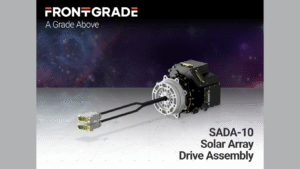As ministries evolve to meet the needs of a more connected, media-savvy generation, many churches are exploring the benefits of digital tools to enhance communication and worship. Among the most transformative technologies is the church led wall—a high-impact visual solution that’s reshaping how churches deliver messages, share scripture, and create immersive worship experiences.
Before making an investment in LED display technology, it’s essential for church leaders and decision-makers to understand not only the benefits, but also the key considerations that can influence long-term success and sustainability.
Define Your Church’s Specific Needs
Not all congregations are the same, and neither are their display requirements. Some churches may need a modest screen to enhance sermon visibility in a small sanctuary, while others may seek a large-scale setup for a multi-campus broadcast ministry.
Start by assessing where and how you intend to use the screen. Will it serve as a central backdrop during services? Display lyrics and scripture? Stream live video? Understanding your core needs will help you choose the right size, pixel pitch, brightness level, and control system.
Also consider the architectural layout of your worship space. Factors like ceiling height, ambient light, and viewing angles can all affect the performance of a digital wall.
Understand the Total Cost of Ownership
While the upfront investment in a church led wall can be substantial, it’s important to evaluate the total cost of ownership over time. Unlike traditional projectors, LED displays have no bulbs to replace, boast longer lifespans, and require less ongoing maintenance.
Energy efficiency is another cost factor to consider. Many modern LED systems are designed to run continuously without excessive power draw, which can result in significant savings for churches that hold multiple services or weekly events.
That said, churches should also budget for additional elements like wall mounting structures, signal processors, cabling, and optional sound integration—along with training or installation support if needed.
Focus on Image Quality and Readability
In a worship environment, clarity is key. Your congregation should be able to read text and view images clearly from every seat in the sanctuary. This means choosing the right pixel pitch—essentially the distance between each LED light—for your viewing distance.
For smaller venues, a tighter pixel pitch (like 1.5mm–2.5mm) delivers a more refined image up close. In larger churches where viewers are farther away, a wider pixel pitch (3mm–4mm or more) can still produce excellent visuals while reducing hardware costs.
Consider Integration With Existing AV Systems
Before installing a new LED wall, it’s wise to evaluate how it will integrate with your church’s existing audio-visual setup. Will it be controlled via your current media software? Do you have compatible hardware for video feeds or livestreaming?
Some LED display systems are plug-and-play, while others may require more complex integration with switchers, control panels, or digital mixers. Working with a trusted AV consultant or installer can help ensure seamless functionality and future scalability.
If your church is planning to expand into online broadcasting or hybrid worship services, make sure the display system supports high-quality video capture and real-time media management.
Look for Flexibility and Modularity
A key advantage of modern LED technology is modularity. This means the display can be expanded, reshaped, or even relocated as your church’s needs evolve.
Many churches opt for screens that can grow with them—for example, starting with a modest central wall and adding side panels later for lyrics or translations. Others use movable LED panels for multi-purpose spaces, allowing the same technology to serve both worship and community events.
Train Your Team for Long-Term Success
Even the best equipment can fall short if the team using it isn’t confident. After installation, invest time in training your AV volunteers and media ministry staff. Understanding how to operate the system, troubleshoot issues, and create engaging visual content will ensure your church gets the most from the technology.
Some churches even designate a “visual director” role to manage all screen content, from sermon slides and song lyrics to welcome messages and announcements.
Think Beyond Sunday Services
A church led wall is not limited to weekend worship. Many congregations use their digital screens throughout the week for a variety of events: youth group nights, Bible studies, prayer meetings, weddings, and community outreach.
Final Considerations
Before making a decision, seek input from ministry leaders, your congregation, and trusted AV professionals. The right LED display can elevate every aspect of your worship experience, from message delivery to congregational participation.
Article received via mail






























